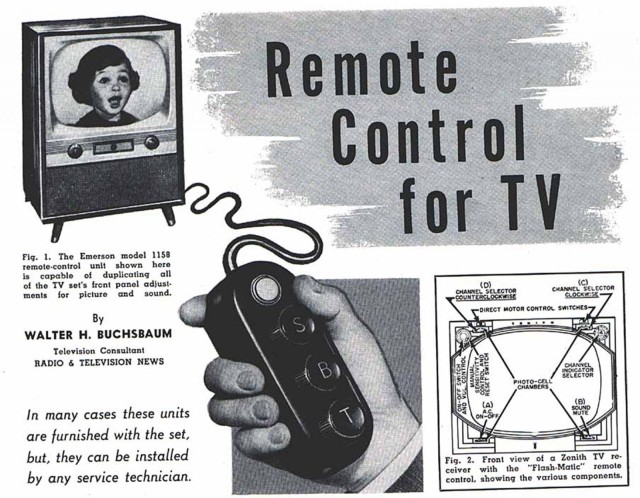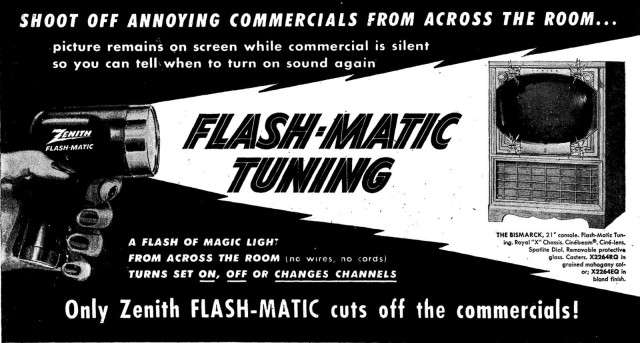The person who named the first television remote control in 1950 knew exactly how it would transform Americans. It was called “Lazy Bones.”
 Sure enough, we became couch potatoes. But television today without a remote would be near impossible and far from relaxing. Who would want to stand at the set pressing the up arrow button to go through the infinite number of channels brought to us by cable and satellite TV?
Sure enough, we became couch potatoes. But television today without a remote would be near impossible and far from relaxing. Who would want to stand at the set pressing the up arrow button to go through the infinite number of channels brought to us by cable and satellite TV?
You probably grew up with parents that referred to the remote as a “clicker.” That’s because early models had big buttons that made a percussive sound when pressed. The first TV remotes, like Zenith’s Lazy Bones, were tethered to the set with a long cord.

Children rejoiced because the adults in the house no longer used them as channel-changers. But the convenience of tuning the boob tube from the seated position was not without its hazards. Households complained about tripping over the cord.
While today’s TV remotes are technological marvels that control virtually everything in the house, current models do not compare in design to Zenith’s first wireless remote, the Flash-matic.

It was green and looked like a ray gun from Flash Gordon. Zenith put sensors in the four corners of the picture tube and the Flash-matic emitted a directional beam of light that would turn the television on and off and change the channels. No tripping!
A new feature controlled a growing animosity toward commercials — mute. TiVo and DVR sets now offer another option to get past commercials, but in the ’50s, muting the sound during advertisements was considered revolutionary.
But remotes were also revolutionary in a warring sense. The TV became a battleground over which shows to watch, testing gender roles, tastes in programming and marital bliss in the era of Leave It to Beaver. Zenith exploited this dynamic as the company’s tech wizards tweaked the design of the remotes. In a late-’50s ad for the Zenith Space Command TV, comedian George Burns has seized control over the television from his wife, Gracie. A lot of advertising at the time seemed to imply technology was a man’s domain.

For the most part, there is now peace in our homes. Now many couples and families sit together, but they also retreat to their own rooms to watch their favorite shows on their own TVs. At least this way, everyone has control of the remote.


